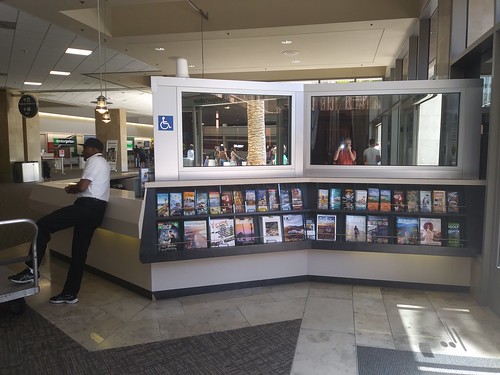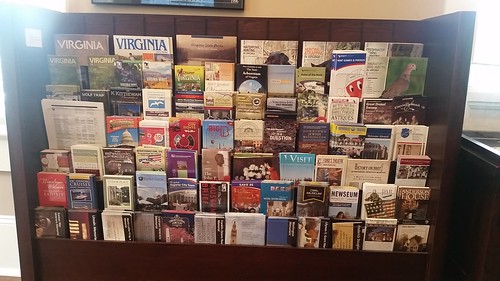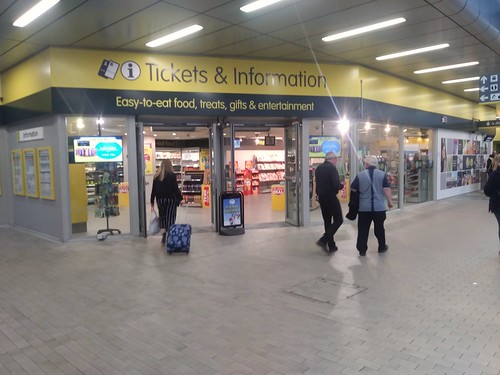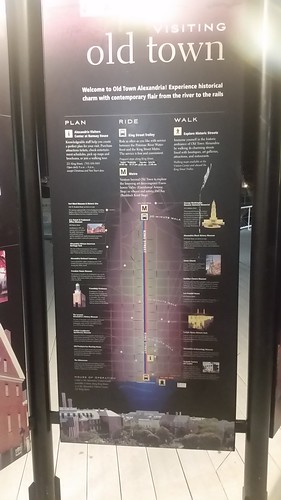World Tourism Day, Thursday September 27th: Regions need to work together more on delivering tourism information
-- World Tourism Day, September 27, 2018
Because jurisdictions have very specific boundaries and revenue generating systems, it's difficult to get multiple jurisdictions "to work together" at the metropolitan scale on tourism matters, because it's seen as a zero sum game.
I admit I wasn't happy when a previous director of DC's convention and visitors bureau thought it was reasonable to promote National Harbor in nearby Prince George's County as part of "DC," or how Montgomery County in Maryland had a "DC days, Montgomery nights" campaign to promote staying at hotels there, or how Fairfax County in Virginia says they're just outside of DC in their tourism promotion etc.
On the other hand, from the tourist's perspective, they are visiting the area, not necessarily just one specific jurisdiction, and it would be helpful to have information from "the area" at a visitors center rather than just the one community.
This isn't a problem limited to the Washington, DC area which is split across "three states."
I was surprised when visiting Liverpool in June that the city's visitor centers only had information for Liverpool, not for any other parts of the Merseyside region (except for bike maps at the transit information centers). The same was true for London--but those centers barely had any information for the city's various boroughs let alone the immediate area outside of the city.
 John Wayne Airport tourist information desk.
John Wayne Airport tourist information desk.Airports are a good place for delivery of tourist information at the regional scale, and this is the case for many places, not just the Washington-Baltimore area. (The John Wayne Airport in Santa Ana/Orange County, California does a pretty good job on this dimension.)
In the I-95 Corridor, many of the states offer comprehensive visitors center which include information from the entire state, as well as sometimes, info on DC, because DC is a primary destination for travelers.
Maryland and Pennsylvania are standouts in terms of the quality and breadth of information presented in their visitor centers.
These centers are models for what can be done at the regional scale.
 Washington DC section of attraction brochures, City of Fairfax Visitor Center.
Washington DC section of attraction brochures, City of Fairfax Visitor Center.In the DC area, on the Virginia side, Alexandria, Fairfax City, and other jurisdictions have particularly good visitor centers.
The Fairfax City visitors center goes out of its way to get information for various DC attractions, because they find that many of the visitors to the center are most interested in DC destinations.
 Transit information delivery. The Brits seem to do the best job of delivering transit information as part of ticket sales.
Transit information delivery. The Brits seem to do the best job of delivering transit information as part of ticket sales.The centers in the Liverpool train system (pictured at right) even sell sundries and food--the magazine section in one had at least one magazine focusing on railroads (because of the extensive railway network there used for commuting, this is still a matter of high interest), Rail Magazine is published twice/month.
Transport for London's information centers also had some tourist information.
Transit wayfinding for visitors generally has a great deal of room for improvement. The City of Alexandria, Virginia does a nice job with signs outside the Metrorail station and on the waterfront. Newcastle

======
Problems special to DC
1. Federal visitor centers won't distribute non-federal information and sometimes won't even distribute information from different agencies.
2. In one of yesterday's posts on this subject, I suggested that the National Park Service create "regional visitor centers" in the Greater Washington region, to deliver services and information beyond that of a specific park or site.
3. The area is served by three airports, two in Virginia and one in Maryland. There are "traveler's aid" desks in the airports but not comprehensive visitor services. (The same is true for Union Station in DC.)
4. Unlike many other cities, DC does not have a program that supports the development of visitor brochures for sub-city neighborhood destinations such as "Downtown," "Georgetown,or "Capitol Hill."
Labels: tourism, tourism marketing, transit wayfinding



0 Comments:
Post a Comment
<< Home